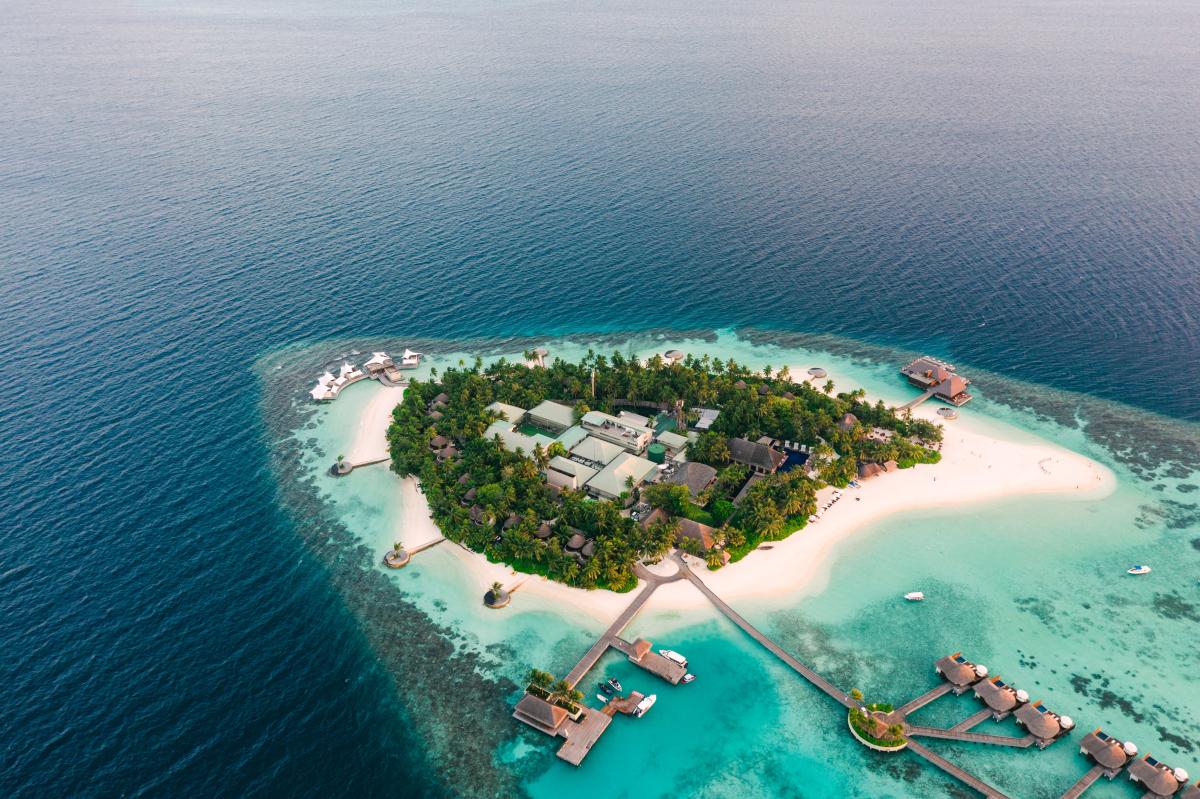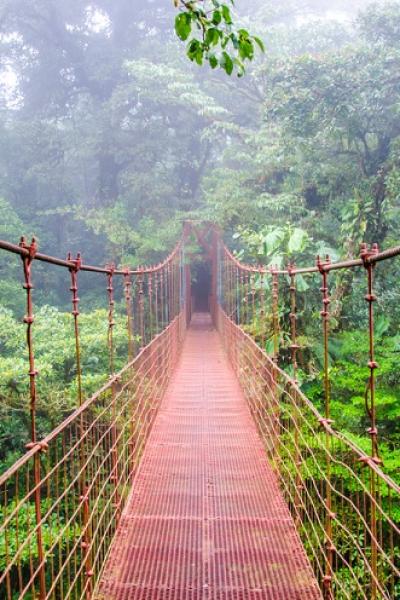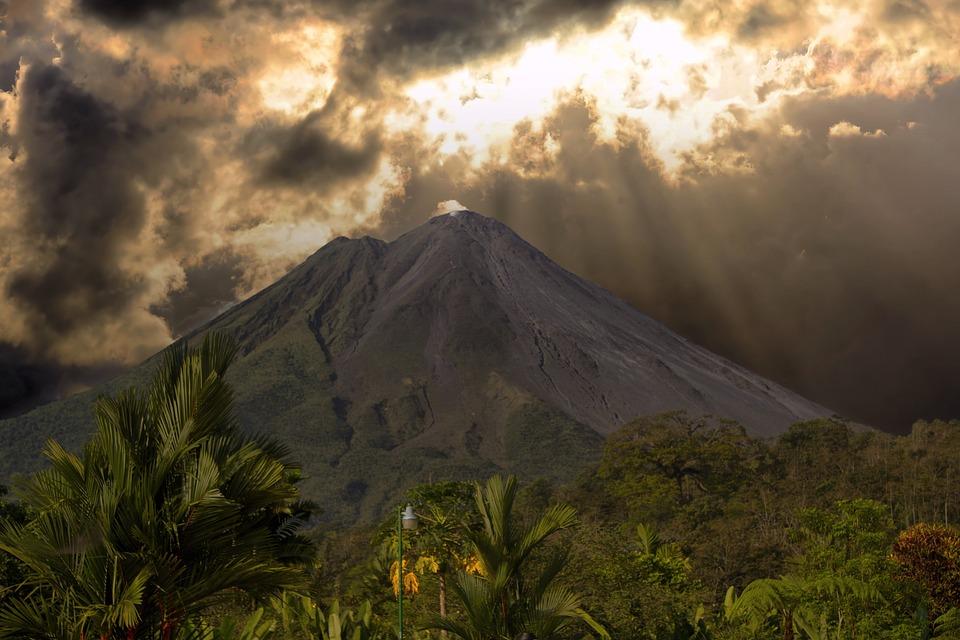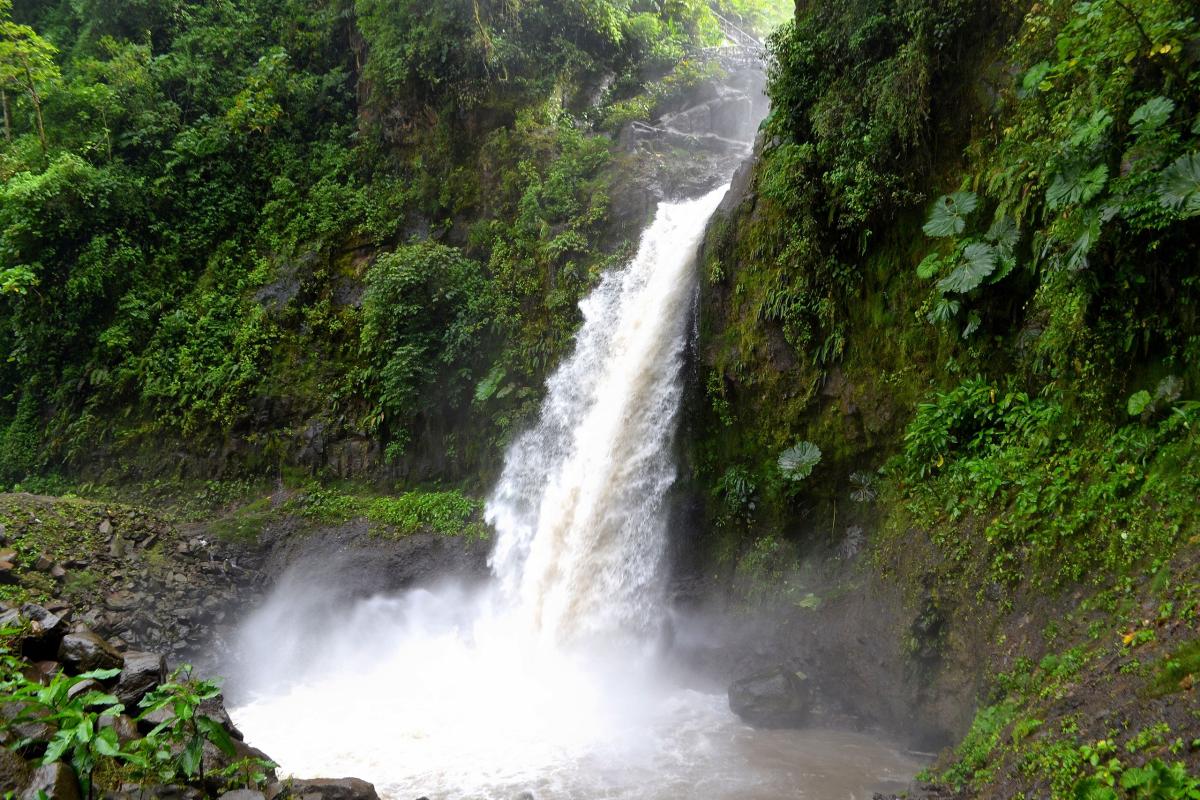
Costa Rica Attractions: A Guide to the Best Places to Visit in the Land of Pura Vida
Costa Rica is a small country in Central America, but it has a lot to offer for travelers who are looking for adventure, nature, culture, and relaxation. Costa Rica is known for its rich biodiversity, stunning landscapes, friendly people, and laid-back lifestyle. Whether you want to explore the rainforest, surf the waves, hike the volcanoes, or relax on the beach, Costa Rica has something for everyone. In this article, we will introduce you to some of the best attractions in Costa Rica, and give you some tips on how to make the most of your trip.
Why Visit Costa Rica?
Costa Rica is one of the most popular destinations in Latin America, and for good reasons. Here are some of the benefits of visiting Costa Rica:
- It’s safe and stable. Costa Rica is a peaceful and democratic country, with a low crime rate and a high human development index. It has no army, and instead invests in education, health, and environmental protection. Costa Rica is also one of the happiest countries in the world, according to the World Happiness Report.
- It’s diverse and beautiful. Costa Rica has a variety of natural and cultural attractions, from lush rainforests and mountains, to pristine beaches and islands, to charming towns and villages. Costa Rica is home to more than 5% of the world’s biodiversity, with over 500,000 species of plants and animals, many of them endemic or endangered. You can see exotic wildlife such as monkeys, sloths, toucans, macaws, hummingbirds, frogs, turtles, dolphins, and whales, among others.
- It’s fun and adventurous. Costa Rica is a paradise for outdoor enthusiasts, with plenty of activities to choose from. You can enjoy surfing, snorkeling, diving, kayaking, rafting, zip-lining, canopy tours, horseback riding, mountain biking, hiking, camping, and more. You can also experience the thrill of visiting active volcanoes, hot springs, waterfalls, and caves.
- It’s relaxing and affordable. Costa Rica is a great place to unwind and recharge your batteries, with many options for wellness and leisure. You can relax on the beach, enjoy a massage, practice yoga, meditate, or visit a spa. You can also savor the delicious and healthy Costa Rican cuisine, which is based on rice, beans, fruits, vegetables, and seafood. Costa Rica is also relatively cheap compared to other destinations, especially if you travel off-season, use public transportation, and stay in local accommodations.
When to Visit Costa Rica?
Costa Rica has a tropical climate, with two main seasons: dry and rainy. The dry season runs from December to April, and the rainy season from May to November. The best time to visit Costa Rica depends on your preferences and plans, but here are some general guidelines:
- If you want to avoid the crowds and the high prices, visit during the rainy season. The rainy season is not as bad as it sounds, as it usually rains for a few hours in the afternoon, and the rest of the day is sunny and warm. The rainy season also has some advantages, such as greener landscapes, fewer tourists, lower rates, and more wildlife sightings. However, some roads and trails may be muddy or closed, and some activities may be canceled due to weather conditions.
- If you want to enjoy the best weather and the most activities, visit during the dry season. The dry season is the peak season for tourism in Costa Rica, as it offers clear skies, sunny days, and pleasant temperatures. The dry season is also the best time for surfing, snorkeling, diving, and whale watching, as the water is calmer and clearer. However, the dry season also has some drawbacks, such as crowded beaches, higher prices, and less wildlife activity.
Where to Visit in Costa Rica?
Costa Rica is divided into seven provinces: San José, Alajuela, Cartago, Heredia, Guanacaste, Puntarenas, and Limón. Each province has its own attractions and characteristics, and you can visit more than one depending on your time and budget. Here are some of the most popular places to visit in Costa Rica, by province:
San José
San José is the capital and the largest city of Costa Rica, and the main gateway for international travelers. San José is a bustling and modern city, with a mix of colonial and contemporary architecture, museums, theaters, parks, markets, and restaurants. Some of the highlights of San José are:
- The National Theater. This is the most emblematic building of San José, and a masterpiece of neoclassical style. It was built in 1897, and hosts various cultural events, such as concerts, ballets, operas, and plays. You can admire the elegant interior, decorated with paintings, sculptures, and murals, and visit the museum that displays the history of the theater.
- The National Museum. This is the largest and most comprehensive museum of Costa Rica, and showcases the natural and cultural heritage of the country. You can see exhibits on pre-Columbian art, colonial history, independence, democracy, and biodiversity. The museum is housed in a former military fortress, and you can still see the bullet holes from the civil war of 1948.
- The Central Market. This is the oldest and most popular market of San José, and a great place to experience the local culture and cuisine. You can find everything from fresh fruits and vegetables, to meat and cheese, to souvenirs and handicrafts. You can also try some of the typical dishes of Costa Rica, such as gallo pinto (rice and beans), casado (mixed plate), or chifrijo (fried pork and beans).
Alajuela
Alajuela is the second-largest province of Costa Rica, and the home of the main international airport, Juan Santamaría. Alajuela is known for its volcanoes, coffee plantations, and waterfalls. Some of the highlights of Alajuela are:
- The Poás Volcano. This is one of the most active and accessible volcanoes of Costa Rica, and one of the largest craters in the world. You can hike to the edge of the crater, and see the turquoise lake and the fumaroles. You can also visit the nearby cloud forest, and see various birds and plants.
- The La Paz Waterfall Gardens. This is a private nature park that features five stunning waterfalls, along with a butterfly garden, a hummingbird garden, a snake exhibit, a frog exhibit, and a wildlife rescue center. You can walk along the trails, and see various animals such as monkeys, sloths, toucans, macaws, and jaguars.
- The Doka Estate. This is one of the oldest and largest coffee plantations of Costa Rica, and a great place to learn about the history and process of coffee production. You can take a guided tour of the plantation, and see the different stages of coffee cultivation, harvesting, roasting, and tasting. You can also enjoy the scenic views of the Central Valley, and buy some of the finest coffee in the world.
Cartago
Cartago is the third-largest province of Costa Rica, and the former capital of the country. Cartago is known for its religious and historical significance, as well as its natural beauty. Some of the highlights of Cartago are:
- The Basilica of Our Lady of the Angels. This is the most important and revered church of Costa Rica, and a pilgrimage site for many Catholics. It was built in 1639, and houses the image of the Virgin of the Angels, the patron saint of Costa Rica. The basilica is a mix of Byzantine and colonial style, and has a rich and colorful interior.
- The Irazú Volcano. This is the highest and most impressive volcano of Costa Rica, and offers spectacular views of the surrounding landscape. You can drive to the summit, and see the main crater, which has a green lake and a lunar-like surface. On a clear day, you can also see both the Pacific and the Caribbean coasts.
- The Orosi Valley. This is one of the most scenic and fertile valleys of Costa Rica, and a popular destination for nature lovers and culture seekers. You can admire the lush green hills, the winding river, and the quaint villages. You can also visit the Orosi Church, the oldest and most beautiful church of Costa Rica, dating back to 1743.
Heredia
Heredia is the fourth-largest province of Costa Rica, and the smallest in terms of area. Heredia is known for its coffee culture, its colonial charm, and its proximity to San José. Some of the highlights of Heredia are:
- The Barva Volcano. This is one of the least visited and most pristine volcanoes of Costa Rica, and a great place to enjoy nature and solitude. You can hike to the three craters, and see the lagoons, the forests, and the wildlife. You can also visit the nearby Braulio Carrillo National Park, and see more of the biodiversity of Costa Rica.
- The Britt Coffee Tour. This is one of the most popular and entertaining coffee tours of Costa Rica, and a fun way to learn about the culture and history of coffee. You can see the coffee plantation, the roastery, and the tasting room, and enjoy the humor and the knowledge of the guides. You can also buy some of the best coffee and chocolate products in the country.
- The Heredia City. This is the capital and the largest city of Heredia province, and a charming and historic place to visit. You can admire the colonial architecture, the churches, the parks, and the monuments, and feel the friendly and relaxed atmosphere of the locals. You can also visit the Central Market, the Cultural Center, and the INBioparque, a biological park that showcases the diversity of Costa Rica.
Guanacaste
Guanacaste is the fifth-largest province of Costa Rica, and the most visited by tourists. Guanacaste is known for its sunny and dry weather, its stunning beaches, and its rich culture. Some of the highlights of Guanacaste are:
- The Tamarindo Beach. This is one of the most famous and lively beaches of Costa Rica, and a hotspot for surfing, nightlife, and shopping. You can enjoy the waves, the sand, and the sun, and mingle with the locals and the foreigners. You can also find a variety of restaurants, bars, clubs, and shops, and have a fun and memorable time.
- The Rincón de la Vieja National Park. This is one of the most diverse and adventurous national parks of Costa Rica, and a must-see for nature lovers. You can hike to the Rincón de la Vieja Volcano, and see the geothermal activity, such as mud pots, fumaroles, and hot springs. You can also explore the tropical forest, and see waterfalls, rivers, and wildlife.
- The Santa Rosa National Park. This is one of the oldest and most important national parks of Costa Rica, and a UNESCO World Heritage Site. It protects the largest remaining area of dry forest in Central America, and the historical site of the Battle of Santa Rosa, where Costa Rica defeated the invaders from Nicaragua in 1856. You can learn about the history and the ecology of the park, and see various animals and plants.
Puntarenas
Puntarenas is the sixth-largest province of Costa Rica, and the largest in terms of area. Puntarenas is known for its coastline, its islands, and its marine life. Some of the highlights of Puntarenas are:
- The Manuel Antonio National Park. This is one of the smallest and most popular national parks of Costa Rica, and a jewel of nature and beauty. You can hike through the rainforest, and see monkeys, sloths, iguanas, and other animals. You can also relax on the white-sand beaches, and swim in the turquoise water. You can also enjoy the views of the Pacific Ocean, and the offshore islands.
- The Monteverde Cloud Forest Reserve. This is one of the most famous and visited reserves of Costa Rica, and a wonder of biodiversity and conservation. You can walk among the clouds, and see the misty and green forest, full of orchids, ferns, and mosses. You can also see more than 400 species of birds, including the elusive quetzal, the national bird of Guatemala. You can also experience the thrill of zip-lining, canopy tours, hanging bridges, and sky walks.
- The Tortuga Island. This is one of the most beautiful and pristine islands of Costa Rica, and a perfect place to enjoy a day trip. You can take a boat or a catamaran from Puntarenas, and sail along the Nicoya Peninsula. You can then disembark on the island, and enjoy the white-sand beach, the palm trees, and the clear water. You can also snorkel, kayak, hike, or relax on the island, and see the marine life and the scenery.
Limón
Limón is the seventh and last province of Costa Rica, and the most diverse and multicultural. Limón is known for its Caribbean influence, its Afro-Costa Rican culture, and its natural attractions. Some of the highlights of Limón are:
- The Puerto Viejo de Talamanca. This is one of the most vibrant and colorful towns of Costa Rica, and a popular destination for backpackers, surfers, and hippies. You can enjoy the laid-back and bohemian vibe, and the mix of cultures and languages. You can also enjoy the music, the food, and the nightlife, and experience the reggae, the calypso, and the rasta culture.
- The Cahuita National Park. This is one of the most accessible and scenic national parks of Costa Rica, and a great place to enjoy the Caribbean coast. You can walk along the beach, and see the coral reef, the mangroves, and the wildlife. You can also snorkel, swim, or kayak in the water, and see the colorful fish, the turtles, and the sharks.
- The Tortuguero National Park. This is one of the most remote and unique national parks of Costa Rica, and a haven for turtles and other animals. You can only reach the park by boat or by plane, and explore the canals, the lagoons, and the forest. You can also see the nesting and hatching of the green, leatherback, hawksbill, and loggerhead turtles, depending on the season. You can also see crocodiles, caimans, manatees, monkeys, sloths, and birds.
How to Visit Costa Rica?
Costa Rica is a relatively easy and safe country to visit, but it also requires some planning and preparation. Here are some tips on how to visit Costa Rica:
- Get a valid passport and a visa, if required. Costa Rica requires a passport that is valid for at least six months after your arrival date, and a visa, depending on your nationality and the length of your stay. You can check the visa requirements and the entry and exit fees on the official website of the Costa Rican immigration.
- Book your flights and accommodations in advance. Costa Rica has two international airports: Juan Santamaría in Alajuela, and Daniel Oduber in Guanacaste. You can find flights from many countries and airlines, but you may need to book early to get the best deals and availability. You can also find a variety of accommodations in Costa Rica, from luxury hotels and resorts, to budget hostels and guesthouses, to eco-lodges and cabins. You can also book online or through a travel agency, but you may need to compare prices and reviews, and check the location and the amenities.
- Pack your essentials and your extras. Costa Rica has a tropical climate, so you will need to pack light and comfortable clothes, such as shorts, t-shirts, sandals, and swimsuits. You will also need to pack some warm and waterproof clothes, such as jackets, sweaters, and boots, for the higher altitudes and the rainy season. You will also need to pack some sun protection, such as sunscreen, sunglasses, and hats, and some insect repellent, as Costa Rica has many mosquitoes and other bugs. You may also want to pack some extra items, such as a camera, a binoculars, a flashlight, a first-aid kit, and a water bottle, to enhance your experience and your safety.
- Plan your itinerary and your budget. Costa Rica has a lot to offer, but you may not be able to see everything in one trip. You will need to plan your itinerary according to your interests, your time, and your budget. You can use online resources, guidebooks, maps, and brochures, to get an idea of the attractions, the distances, and the costs. You can also use a travel agency, a tour operator, or a local guide, to help you with your planning and your booking. You will also need to plan your budget according to your transportation, your accommodation, your food, your activities, and your souvenirs. You can use the local currency, the colón, or the US dollar, as both are widely accepted in Costa Rica. You can also use credit cards, debit cards, or ATMs, but you may need to check the fees and the availability.
Conclusion
Costa Rica is a wonderful and diverse country, that offers something for everyone. You can enjoy the nature, the culture, the adventure, and the relaxation, and have an unforgettable trip. Costa Rica is also a friendly and welcoming country, that invites you to discover its beauty and its charm. Costa Rica is more than a destination, it is a way of life. Costa Rica is pura vida.


Costa Rica presents itself to the world not merely as a destination but as a profound experience. It is a nation where the national ethos, encapsulated in the simple yet powerful phrase Pura Vida, permeates every aspect of life. This is a country that made a deliberate choice for peace, famously abolishing...

La Paz Waterfall Gardens Nature Park should be your first choice if you want to see the greatest of Costa Ricas fauna and natural splendour. With a range of activities and exhibitions for visitors of all ages and interests, this magnificent park is approximately 45 minutes from San Jose Airport. This...